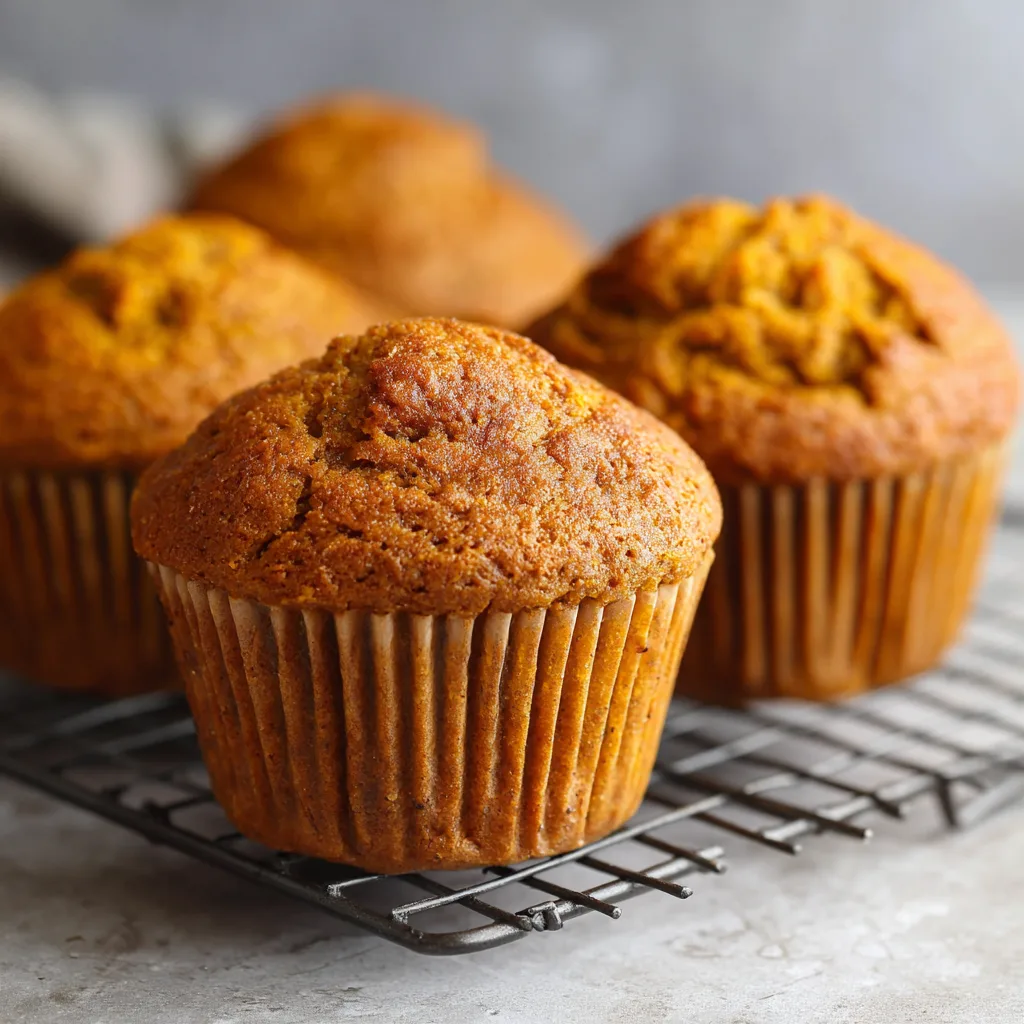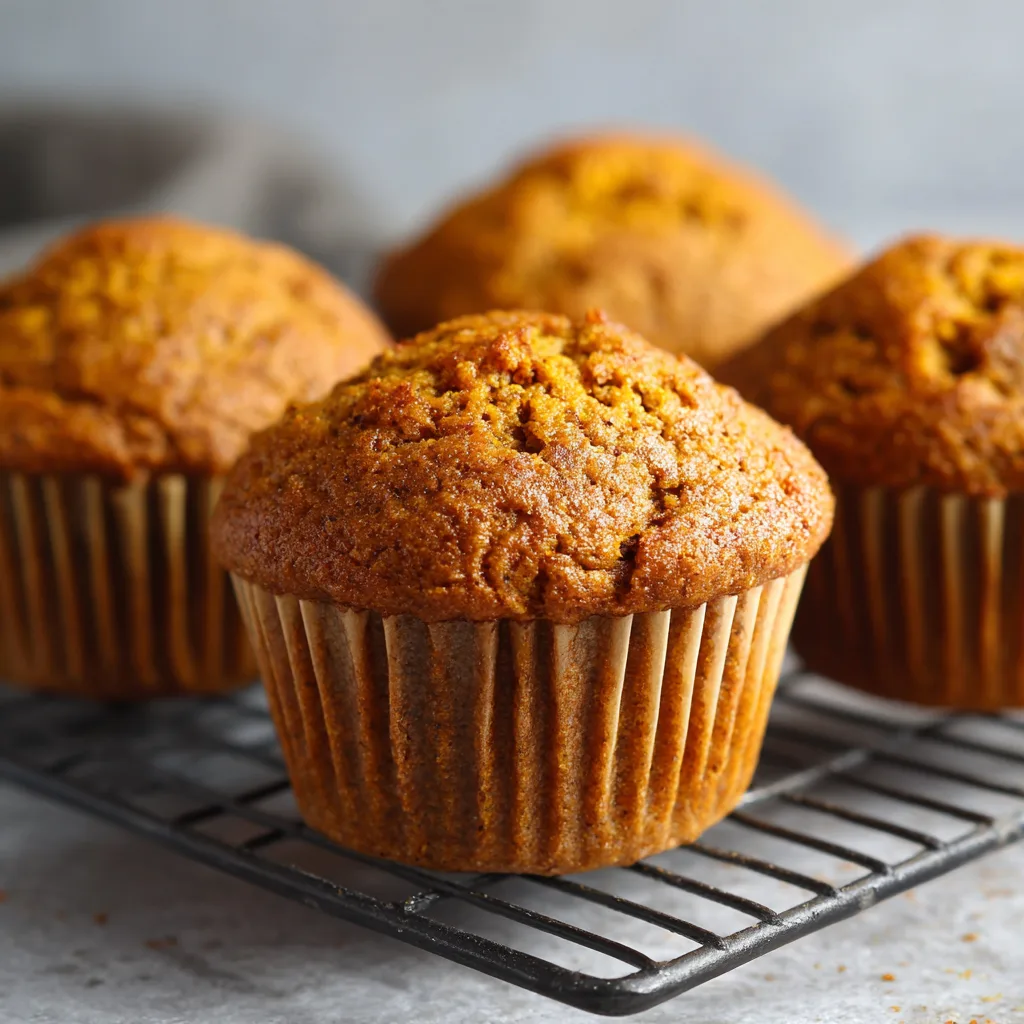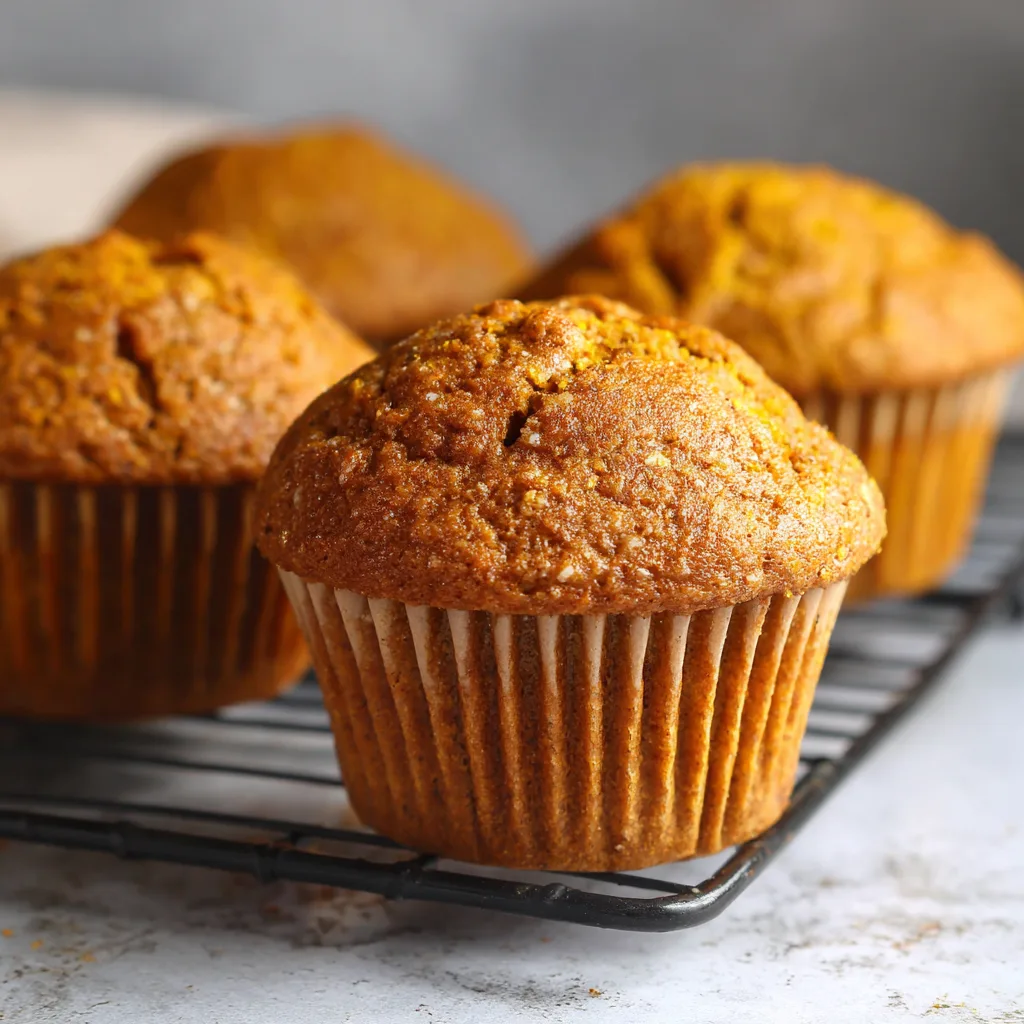Simple Kid-Friendly Pumpkin Muffins
Why Pumpkin Muffins Are a Fall Favorite
Pumpkin muffins capture the essence of fall with their warm flavors and comforting aroma. Each bite delivers a soft, moist texture infused with natural sweetness. Pumpkin provides more than just taste—it’s rich in vitamins A and C, antioxidants, and fiber, supporting growing bodies. Families appreciate these muffins as a wholesome snack or breakfast option, combining nutrition with flavor. Their versatility allows easy adaptation to different diets and ingredient preferences, making them a pantry staple during the harvest season. Seasonal spices, like cinnamon and nutmeg, enhance the pumpkin’s flavor, creating a cozy experience for both children and adults. Baking pumpkin muffins at home also fills the kitchen with an inviting scent, signaling comfort and family gatherings.
Perfect for Picky Eaters
Kid-friendly pumpkin muffins appeal to even the pickiest eaters. Their mild sweetness, soft texture, and subtle spices make them approachable for children. Parents can sneak in wholesome ingredients like whole wheat flour or flax eggs without compromising taste. Muffins offer portion-controlled servings, which encourage healthy eating habits. Additionally, they are highly customizable—add-ins like raisins, chocolate chips, or small fruit pieces can make them more appealing. These muffins provide a convenient, grab-and-go option for busy mornings while satisfying kids’ cravings for a tasty treat. By combining nutrition and flavor, pumpkin muffins create a win-win for families seeking simple, kid-approved recipes.
What Makes a Muffin Kid-Friendly?
Simple Ingredients
Kid-friendly muffins shine when made from simple, familiar ingredients. Using pantry staples like flour, eggs, milk, and pumpkin puree ensures accessibility and ease. Parents can avoid complicated items that children may reject. Simple ingredients reduce food allergies and make substitutions easier. For example, non-dairy milk or whole wheat flour can replace traditional ingredients without altering taste. Limiting complex ingredients helps maintain consistency and encourages children to try new foods. Moreover, using common items speeds up preparation and ensures a predictable outcome every time you bake.
Mild Flavors
Subtle flavors make pumpkin muffins approachable for children. Mild spices like cinnamon or a pinch of nutmeg provide warmth without overwhelming taste buds. Avoiding strong or exotic flavors ensures picky eaters enjoy every bite. A gentle sweetness from natural sources, such as maple syrup or ripe bananas, complements the pumpkin while keeping sugar content low. Mild flavors also allow parents to incorporate nutritious ingredients discreetly. Children enjoy the comforting taste, while parents get the satisfaction of serving a balanced snack or breakfast.
Easy Preparation
Kid-friendly pumpkin muffins succeed when preparation is simple and engaging. Combining wet and dry ingredients in separate bowls, then mixing them together, keeps steps manageable. Children can help with measuring, stirring, or pouring, fostering confidence and interest in cooking. A straightforward method reduces baking errors and ensures consistent texture. Minimal steps also make muffins a convenient choice for busy mornings or after-school snacks. The simplicity encourages families to make muffins regularly, reinforcing healthy habits.
Nutritional Benefits of Pumpkin
Rich in Vitamins and Fiber
Pumpkin is a nutritional powerhouse for growing children. It provides vitamin A, essential for vision and immune function, and vitamin C, supporting healthy development. Fiber in pumpkin aids digestion and promotes a feeling of fullness, helping kids maintain balanced eating habits. Antioxidants in pumpkin contribute to overall health and wellness. Including pumpkin in muffins allows children to enjoy these benefits without noticing they are eating a vegetable. It’s a creative way to combine taste with nutrition seamlessly.
Low in Sugar
Compared to many baked goods, pumpkin muffins can remain low in added sugar while still tasting sweet. Using natural sweeteners or moderate sugar amounts ensures muffins are kid-friendly without excess calories. This approach supports dental health and maintains steady energy levels. Low-sugar muffins provide a healthier alternative to cookies or pastries, making them a smart choice for daily snacks or breakfast options. Families can enjoy guilt-free treats while keeping sugar intake under control.
Essential Ingredients
Pumpkin Puree
Pumpkin puree forms the base of kid-friendly pumpkin muffins. Canned pumpkin offers convenience, consistent texture, and year-round availability. It saves time and ensures smooth batter, ideal for busy families. Homemade pumpkin puree provides a fresher flavor and allows control over moisture levels. Roasting fresh pumpkin enhances natural sweetness and depth. Either option works well, but consistency matters. For best results, ensure puree is smooth and slightly thick to prevent soggy muffins. Using pumpkin as the main ingredient adds natural color, moisture, and nutrients to the muffins.
Whole Wheat Flour
Whole wheat flour boosts the nutritional value of muffins by adding fiber and essential minerals. Unlike refined flour, whole grains support digestion and provide sustained energy, making muffins more filling for children. Using whole wheat flour also adds a subtle nutty flavor, complementing pumpkin and spices. It can replace half or all of the all-purpose flour without compromising texture if measured correctly. Families benefit from a healthier baked good without sacrificing taste, making muffins a wholesome breakfast or snack option.
Natural Sweeteners
Natural sweeteners like maple syrup, honey, or coconut sugar enhance muffins without excessive refined sugar. Maple syrup provides a mild, earthy sweetness and integrates easily with pumpkin puree. Honey adds a floral note but should not be given to infants under one year. Coconut sugar delivers a caramel-like flavor while keeping the glycemic index lower than white sugar. Choosing natural sweeteners allows parents to control sugar content while maintaining appealing taste for kids. Each option blends well with warm spices, keeping muffins flavorful and balanced.
Dairy and Egg Substitutes
For lactose-intolerant or vegan diets, muffins can easily be adapted. Non-dairy milk, such as almond, oat, or soy milk, replaces cow’s milk while maintaining moisture. Eggs can be substituted with flax or chia eggs, mashed banana, or unsweetened applesauce. These alternatives bind ingredients effectively and preserve texture. Using substitutes ensures that dietary restrictions do not prevent children from enjoying muffins. Flexible recipes make pumpkin muffins inclusive for all family members while maintaining flavor and structure.
Step-by-Step Recipe
Preparation
Start by preheating the oven to 350°F (175°C). Prepare a 12-cup muffin tin by greasing it or lining with paper cups. Preheating ensures even cooking and helps muffins rise properly. Preparing the pan ahead of time prevents sticking and makes cleanup easier. This step sets the foundation for a smooth baking process.
Mixing Wet Ingredients
In a large bowl, combine pumpkin puree, eggs (or substitutes), milk, melted coconut oil, and vanilla extract. Stir until fully blended and smooth. Mixing wet ingredients first ensures even distribution of moisture and flavors. For vegan versions, flax eggs or applesauce should be well incorporated to maintain texture.
Incorporating Dry Ingredients
In a separate bowl, sift together whole wheat flour, baking soda, cinnamon, nutmeg, and salt. Sifting prevents clumps and promotes even mixing. Combining dry ingredients separately ensures the leavening agents are distributed uniformly, giving muffins a light, fluffy texture. Properly mixed spices enhance the warmth and aroma of pumpkin muffins.
Combining Wet and Dry Mixtures
Gradually fold dry ingredients into wet ingredients using a spatula. Stir until just combined to avoid overmixing, which can create dense muffins. The batter should appear slightly lumpy but uniform. Gentle mixing ensures muffins remain tender and moist. Overworking the batter is a common mistake that affects final texture, so patience here is key.
Baking and Cooling
Divide the batter evenly among the prepared muffin cups. Bake for 18–20 minutes or until a toothpick inserted into the center comes out clean. Allow muffins to cool in the pan for 5 minutes before transferring to a wire rack. Cooling completely prevents sogginess and preserves structure. Store muffins in an airtight container for up to three days or freeze for longer storage. Proper baking and cooling maximize taste, texture, and appearance.
Flavor Enhancements
Spices
Spices transform pumpkin muffins from simple to irresistible. Cinnamon adds warmth, nutmeg contributes subtle earthiness, and pumpkin pie spice combines the best of fall flavors. Using these spices enhances aroma and taste without overpowering young palates. A light sprinkle in the batter or on top of muffins before baking boosts visual appeal and flavor depth. For picky eaters, start with smaller amounts and adjust gradually. Spices not only enrich taste but also provide antioxidants and anti-inflammatory benefits, adding subtle nutritional value to a kid-friendly treat.
Add-ins
Add-ins make muffins fun and exciting for children. Chocolate chips offer sweet bursts that kids love, while raisins bring natural sweetness and chewiness. Chopped nuts, like walnuts or pecans, add texture and healthy fats, but can be omitted for nut-free versions. Small fruit pieces, such as blueberries or diced apples, complement pumpkin and create flavor variety. Encourage children to participate in adding mix-ins; it fosters excitement and ownership in baking. Customizing muffins with add-ins keeps snacks interesting while maintaining a wholesome profile.
Dietary Modifications
Gluten-Free
Gluten-free pumpkin muffins can be just as moist and flavorful as traditional ones. Almond flour or oat flour works well in place of wheat flour, providing structure and slight nuttiness. Combining gluten-free flour with a small amount of tapioca or cornstarch can improve texture and rise. Properly balanced ingredients ensure muffins remain tender without crumbling. Families with gluten sensitivities can enjoy these muffins without compromising taste or nutrition.
Vegan
Vegan pumpkin muffins replace eggs and dairy with plant-based alternatives. Flax or chia eggs bind the batter effectively, while almond, soy, or oat milk keeps moisture intact. Coconut oil or melted plant-based butter adds richness. Vanilla extract enhances flavor, ensuring the muffins remain appealing to children. Vegan options allow families to accommodate dietary preferences while preserving texture, taste, and color. This flexibility makes pumpkin muffins accessible for all households.
Low-Sugar
Adjusting sweetness keeps muffins health-conscious while satisfying taste buds. Maple syrup, honey, or coconut sugar can replace refined sugar. Reducing sugar slightly encourages children to enjoy the natural flavors of pumpkin and spices. Adding fruit or vanilla extract enhances sweetness without extra sugar. Low-sugar muffins support balanced energy levels and dental health, making them a smart choice for school snacks or breakfast. Small changes in sweetness still deliver a satisfying, kid-approved treat.
Storage and Shelf Life
Room Temperature
Storing pumpkin muffins at room temperature keeps them soft and ready to eat. Place muffins in an airtight container or cover with a clean cloth to prevent drying out. They typically remain fresh for up to three days. Keeping muffins on the counter ensures easy access for busy mornings or after-school snacks. Proper storage preserves both texture and flavor, maintaining a consistent, kid-friendly experience.
Freezing
Freezing extends the life of pumpkin muffins for weeks. Wrap each muffin individually in plastic wrap or parchment paper, then place them in a freezer-safe container or bag. Thaw muffins at room temperature or warm briefly in the oven or microwave. Freezing preserves moisture, flavor, and structure, providing a convenient, ready-to-eat option for families. This method reduces waste and keeps muffins available for quick breakfasts, snacks, or lunchbox additions.
FAQs About Kid-Friendly Pumpkin Muffins
Can I use fresh pumpkin instead of canned?
Yes, fresh pumpkin works well but requires preparation. Start by cutting the pumpkin into chunks, removing seeds and skin. Roast or steam the pieces until tender, then mash or puree until smooth. Ensure the puree is thick to maintain muffin texture. Fresh pumpkin offers a slightly sweeter and more vibrant flavor than canned. Adjust moisture in the recipe if needed, as homemade puree may contain more water. Using fresh pumpkin adds a natural touch and allows families to enjoy seasonal produce at its peak.
How can I make these muffins nut-free?
To make muffins nut-free, avoid almond flour or any nut-based add-ins. Replace almond milk with oat, soy, or rice milk, and skip chopped nuts in the batter. You can substitute with seeds like pumpkin or sunflower seeds for crunch and nutrition. Using safe, simple ingredients ensures that children with allergies can enjoy muffins without risk. Nut-free muffins remain moist and flavorful, especially when natural sweeteners and pumpkin puree are incorporated properly.
Are these muffins suitable for toddlers?
Yes, with caution. Avoid whole nuts, large chocolate chunks, or excessive sugar for toddlers to reduce choking hazards. Opt for finely chopped or soft add-ins. Ensure muffins are baked to a tender, easily chewable texture. Using minimal spices and moderate sweetness keeps them gentle on young taste buds. These considerations allow toddlers to enjoy muffins safely while providing nutrition from pumpkin, whole grains, and natural sweeteners.
How can I make these muffins more flavorful?
Enhancing flavor doesn’t require extra sugar. Try adding a pinch more cinnamon, nutmeg, or pumpkin pie spice. Small additions like unsweetened applesauce, mashed banana, or a few chocolate chips can intensify taste naturally. Zesting an orange or lemon adds a fresh, aromatic note. Even a light sprinkle of cinnamon sugar on top before baking boosts both flavor and visual appeal. These simple adjustments create more enticing muffins while keeping them wholesome and kid-friendly.




